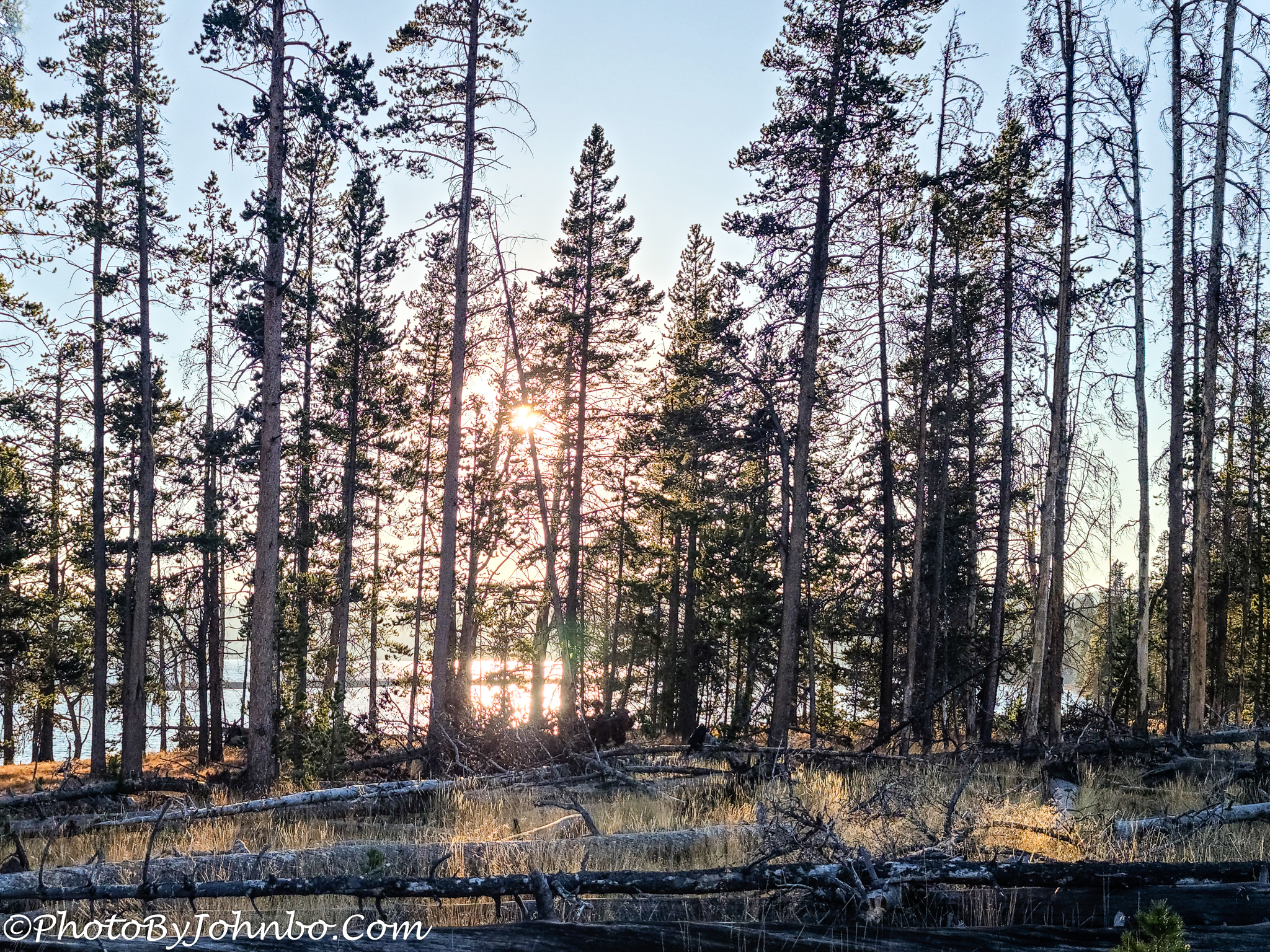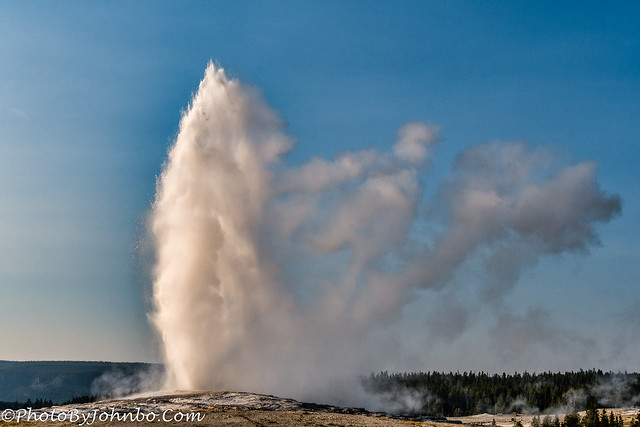Yellowstone National Park, Wyoming.
On March 1, 1872, President Ulysses S. Grant had the honor of signing the congressional bill that created Yellowstone as a National Park and the world’s first national park. On the National Park Service pages noting the history of Yellowstone, a small print section set aside notes that some believe that Hot Springs in Arkansas holds the distinction of being the first park. The paragraph sets that notion straight.
“Some sources list Hot Springs in Arkansas as the first national park. Set aside in 1832, forty years before Yellowstone was established in 1872, it was actually the nation’s oldest national reservation, set aside to preserve and distribute a utilitarian resource (hot water), much like our present national forests. In 1921, an act of Congress established Hot Springs as a national park.”
Yosemite became a park also before Yellowstone, but it originated as a state park, not adopted into the National Park System until 1890. One can argue details like this, but no one can argue with the truly beautiful and unique landscape that is Yellowstone. My first views of Yellowstone were approaching from the south entrance. We entered the park late in the afternoon, and as we passed by the southern end of Yellowstone Lake, the sun retreating behind the trees provided a fitting subject for my first image of Yellowstone Park.
We would drive through the park that late afternoon and evening without stopping, exit by the East Entrance Road, and spend another hour driving to our hotel in Cody, Wyoming. We returned to Yellowstone the next morning to spend the day exploring the wonders of this geothermal phenomenon. The photo above features a view of Yellowstone Lake from a pull-off on the main road through the park. The geothermal activities within the park provided much of the impetus to make Yellowstone a national park, so next week I will devote an entire album of photos featuring geothermal activities within the park boundaries. This week’s album features scenic views of the park.
There are plenty of hiking and biking trails, campgrounds for tents and RVs, and back-country camping for people who want to “get away from it all.” But be reminded that Yellowstone is one of the most popular camping destinations in the National Park System and is open to millions of visitors each year. Plan your trip well in advance if you plan to stay in the park whether it be in one of the lodges or camping areas. You can expect popular venues to be reserved a year in advance during the high visitor season.
For day visitors, such as ourselves, we encountered little delay with traffic in early October but found many of the facilities were closed for the season after Labor Day weekend. Though there are places to purchase gasoline in the park, they were closed. As the country was still in some of the throes of the Coronavirus Pandemic, I don’t know if these closures were seasonal or pandemic-related.
Nymph Lake is a small lake surrounded by geothermal features such as small geysers and springs. This image was captured from a main highway pull-off in the section known as the Norris Basin.
You’ll probably notice in some of the images in the gallery that those western wild fires continued to create a hazy sky. The haze removal feature in Luminar AI has been helpful in my photographs all during this trip in September and October 2020, but as they say, it is what it is.
The park is home to many species of wildlife, much of it hidden for most of our visit, however, in the afternoon, near one of the more popular geothermal areas, we saw our first small herd of elk. They appeared over the top of a hill as we were getting ready to move on.
Just before we drove out of the area, I joined a group of photographers lined up along the road to capture their own images. Elk herds in the park can number in the hundreds, and there were quite a few more visible than this smaller group. I suspect there were many more elk behind the hill that we could not see.
Let me see… if a group of elk is called a herd and a group of geese is called a flock, what is a group of photographers called? A viewfinder of photographers? A burst mode of photographers? I leave it to you, dear reader, to come up with better terms than I. Feel free to leave a comment with your ideas.
In the park, we also saw many bison. We also looked high on the cliffs to see if we could find any mountain goats. Finally, late in the afternoon, we noticed a pullout where a large number of cars were parked. People were outside their cars looking high up into the towering cliffs. We found a place to park and discovered the mountain goats that everyone was watching.
Our last stop of the day brought us to a mound surrounded by hundreds of people, all sitting patiently and awaiting probably the most well-known event in the park. As I noted earlier, next week I reserved space for the geothermal features found in Yellowstone Park. But this one feature is so well known that it belongs in any discussion of the world’s first national park. Most of the people in this large group were wearing masks or were sitting socially distanced respecting the guidelines provided by the National Park Service following CDC recommendations.
Everyone was waiting patiently for Old Faithful to explode out of the top of the mound. Our timing had been excellent. We parked the car, the lot quite full, and had a bit of a walk to the viewing area. We waited only about five minutes to see a little bit more steam start rising from the opening at the peak of the geyser. It would only be a minute or two more before the giant release of steam would begin.
Some facts about this popular natural eruption:
Eruptions happen between one and two hours apart. The duration of an eruption allows scientists to determine how long before the next eruption occurs.
Eruptions last from 1 to 5 minutes. On our visit, the eruption lasted about 5 minutes, the duration based upon time stamps on the series of photographs I took from beginning to end of the eruption.
Typical eruptions average around 140 feet (43 m) in height.
For a closer view of the gallery of images including a few extra images not published here, click on any of the above images to link to my Flickr album or click here to go directly to the album.
Stay tuned next week for more on the geothermal attractions at Yellowstone Park.
John Steiner












A gaggle of photographers?
I like that. It fits. >grin<
Informative post. Despite my many travels, I haven’t been to Yellowstone. Close but not inside. You’ve inspired me to make my way there within the next year or so.
It is worth the trip. Truth is, after seven decades on this planet, those images are the first I’ve seen of this park as well. Even with the hazy skies, it was worth the trip and I look forward to revisiting, possibly as soon as next month.
great post! informative and inspiring! thank you 🙂
Thanks for stopping by and thanks for the compliment.
A “cluster”, as nowadays it is widely used in a rather negative sense as something disruptive to natural life. I like your review of the park, I haven’t had the chance to visit it on my travels in the West. But after seeing Yosemite, it was certainly the one that attracted me the most.
If I am allowed to see only one place in the USA with my own eyes, then I pray that it should be Yellowstone. Thanks for taking us along with you on this trip, John!
Our plan is to visit again sometime this year. We were close this summer, but didn’t have time to stop this trip.